You have no items in your shopping cart.
Wine Vallée de la Loire
The Loire Valley vineyard is a large area of French wine production covering 70,000 hectares producing 4 million hectolitres of dry, semi-dry, sweet and syrupy white wines as well as light red and rosé wines. The region also offers very pleasant sparkling wines thanks to its exceptional terroirs. Read more on Vallée de la Loire
-
Top Selling-25%
-
Top Selling
-
Top Selling-29%
- -17%
- -17%
- -24%
- -26%
- -10%
- -17%
- -10%
Region Vallée de la Loire
The Loire Valley is a vast wine region
The Loire represents one of the wine regions in France. In fact, there are five sub-regions, namely the Pays Nantais, Anjou, Touraine, Auvergne and Centre, and thus a great diversity of wines. It can be referred to as the Loire Valley vineyard or the Loire Valley. But whatever you call it, it remains a rich and varied region. This wine-growing area stretches for more than 1,000 km along the Loire and its tributaries and 70,000 hectares of vineyards for a production of 4 million hectolitres per year.
The Loire Valley offers us all types of wine as well as sparkling wines. They are produced thanks to the use of 23 different grape varieties present in the region. These include the famous Pinot Noir, Cabernet Franc, Gamay and Sauvignon.
Given its size, this region offers us a variety of landscapes, each as beautiful as the next. Whether you are in the heights of the mountains of Auvergne surrounded by wild nature or on the coast facing the Atlantic Ocean, you can taste exceptional wines in the image of the richness of the terroirs of the Loire Valley. Don't hesitate to discover the longest wine route in France which runs through this region. All along its 800 kilometres, you can discover these famous varied landscapes and the multitude of wines produced.
The history of Loire wines
The arrival of the vine in the region is thought to date back two thousand years, and the Romans are thought to have been responsible for its origin. In the 5th century, the wine culture experienced an important development under the impulse of the producing abbeys. Later, with the development of the Loire as a navigation channel for trade, the wines of the region became known on a larger scale. It is important to note that in 1154, when the Duke of Anjou, Henry II, acceded to the throne of England, he became the ambassador for the wines of the region. These would then be reserved for the lords and their courts.
In 1709, the Nantais vineyard was almost completely destroyed by an extremely difficult winter. It was rebuilt some time later thanks to the planting of a more resistant grape variety, the melon. During the French Revolution, the Vendée civil war opposing royalists and revolutionaries will destroy the vineyards of Nantes and Anjou. Like the majority of the French wine regions, the Loire Valley will be impacted by the phylloxera crisis which will devastate a large part of the crops.
With the years and the passion of the winegrowers, the region will recover from these various hazards and will once again produce quality wines. The first A.O.C. wines appeared in 1936. Since 2000, the Loire wine region has been classified as a Unesco World Heritage Site.
Characteristics of the Loire vineyards
As the Loire Valley is a very large wine region, so are its characteristics.
In terms of climate, there is an oceanic climate near the Nantes coast, a temperate climate along the Loire and a continental climate around the Massif Central. Depending on their geographical location, the vineyards therefore experience different climatic conditions. However, it can be noted that the temperate climate is ideal for wine growing and that the climate of the Massif Central makes production more difficult but gives rise tomore robust wines.
Vines grow at varying altitudes from over 1500 metres in the Massif Central to 50 metres in Touraine. This is why we find very different soils that will give the wines particular subtleties. There are granite and schist soils in the Nantes, Anjou and Vendée regions and chalk, marl, sand, clay and gravel soils in Touraine, Saumur, around Orléans and in the central Loire.
The grape varieties of the Loire
There are 23 grape varieties in the vineyards of the Loire Valley. It is the quantity and diversity of these that allows the production of wines that are very different from one another and very rich in taste. Some grape varieties are native to the region but others come from Burgundy and the South West.
For the red wines, the following grape varieties will be used: Cabernet Franc, Cabernet Sauvignon, Gamay, Merlot, Pinot Noir, Pinot Gris, Pinot Meunier, Cot, Pineau d'Aunis, Grolleau, Gamay de Bouze and Négrette. The small black berries with blue reflections of Cabernet Franc (native to the Spanish Basque country) and Cabernet Sauvignon give tannic and very aromatic wines. Gamay, a sensitive grape variety with juicy berries and Négrette from the South West with its small black berries producefruity and low tannin wines. Merlot produces powerful and fruity red wines.
Pinot noir and Pinot Meunier give us wines for ageing that are full-bodied and round in the mouth, with red fruit aromas. Pinot gris and Grolleau are used to make rosé wines. Cot brings finesse and colour to the wines. Pinot D'Aunis, on the other hand, gives wines with little colour but with notes of raspberries. The Gamay de Bouze, a very discreet grape variety with its very small berries, gives dry rosé wines and light red wines.
For white wines, the following grape varieties are used: Chenin blanc, Sauvignon, Chardonnay, Melon de Bourgogne, Romorantin, Folle- blanche, Chasselas, Arbois or pineau menu, Grolleau Gris, Saint-Pierre-Doré and Sacy. Chenin Blanc has golden berries with green reflections and is used in the production of all types of white wines. Sauvignon gives us dry white wines, sweet white wines and sweet wines but in all cases, very aromatic wines. The small yellow berries of Chardonnay give us light and fresh wines with aromas of hazelnut and coffee. Melon de Bourgogne gives dry, light and fresh white wines with fruit and floral accents.
The small white berries of Romorantin produce dry white wines. Folle-Blanche is used to make dry, lively wines. Chasselas produces light, fresh wines. Arbois helps to reduce the acidity of wines. Grolleau gris is used to create the region's sparkling wines. Finally, Sacy produces dry, light wines.
The appellations of the Loire
Given its size, the Loire wine region has a wealth of appellations. There are 52 appellations d'origines contrôlées (A.O.C.) and 8 protected geographical indications (I.G.P.). It is the 3rd region in France with the most appellations. It would be complicated to present you one by one these A.O.C., however here is a small non-exhaustive list.
The Muscadet
The Muscadet AOC is one of the few A.O.C.'s to bear the name of a grape variety. Today, this grape variety has changed its name to Melon de Bourgogne. This dry white wine is produced in 81 communes around Nantes. There are 3 sub-regional appellations: Muscadet Sèvre et Maine, Muscadet coteaux de la Loire and Muscadet côtes de Granlieu.To the eye, its colour is pale and golden with green reflections. On the nose, one can distinguish aromas of fermentation and touches of sea salt. With age, the aromas of white flowers and citrus fruits become more present. On the palate, it is a balanced and light wine. We feel its freshness and appreciate its roundness. It will go perfectly with your fish and shellfish.
The A.O.C. Anjou
The AOC Anjou is available in white, red and rosé wines and very confidentially in sparkling wines. It is produced on the Saumur side and around the Armorican massif. The wines of Anjou are wines of character.The red wines have a bright colour that tends towards ruby. On the nose, one can distinguish floral accents and aromas of red fruits and even spices. These are fresh and balanced wines that show us all their finesse and then give way to their fruity character. To the eye, the white wines are yellow with green or even golden highlights. We denote strong white flower scents with hints of lemon and orchard fruits. On the palate, they are round and structured.
The rosés are luminous with a pale pink colour tending towards raspberry or salmon depending on the vintage. There is a strong sense of red fruit notes and an impression of sweetness. On the palate, they are supple and harmonious. We find the red fruit aromas to which we add hints of mint and pepper. You can enjoy the A.O.C. Anjou with your meats and fish.
The A.O.C. Chinon
The A.O.C. Chinon is produced between the Vienne and the Loire rivers. It is best known for its red wines, but also exists in white and rosé. It takes its name from the town of Chinon, located in Indre Et Loire.To the eye, the red wines are quite clear, with a ruby red colour. The whites tend to be straw yellow, while the rosés remain ruby but very clear and pale. On the nose, the reds and rosés are distinguished by aromas of red fruits and more specifically of fruits of the forest. The white wines, for their part, have aromas of citrus with notes of honey, flowers and quince.
On the palate, the reds are quite tannic and there are the aromas of red fruits. The rosés are structured and fruity but we can now distinguish notes of flowers. Finally, the whites are fresh and round.The food and wine pairings are numerous, but you can enjoy a Chinon with your red meats, charcuterie and cheeses.
Sancerre
Sancerre is a wine of character whatever its colour. Indeed, it exists in red, rosé and white wine. Produced in the vicinity of the town of Sancerre, it obtained its A.O.C. in 1936.White Sancerre, mostly produced thanks to the Sauvignon grape variety has a rather pale golden colour. On the nose, one can distinguish citrus aromas with notes of mint and acacia. On the palate, one finds pleasant orange flavours to which one can add touches of quince, apple and honey. The white wines of Sancerre are light and structured.
The red wines are notable for their aromas of morello cherry and cherry.Their colour is a bright ruby. On the palate, they are supple with a melted tannin. The aromas of cherry and morello cherry are then found.
The rosés have a grey colour and give off peachy scents. They are fresh and fruity in the mouth. The A.O.C. Sancerre can be enjoyed with many dishes such as poultry, dry cheeses, fish in sauce and charcuterie.
The Côte-d'Auvergne
The A.O.C. Côte d'Auvergne is produced in 52 communes of the Puy de Dôme in the Auvergne mountains. A.O.C. since 2011, it exists in white, red and rosé. Depending on certain criteria, 5 geographical appellations can be added to the term Côte d'Auvergne: Boudes, Chanturge, Chateaugay, Corrent and Madargues.To the eye, the red wines have a purplish colour, the rosés are quite pale with yellow reflections and the whites are bright with a platinum colour. On the nose, the reds have aromas of red fruits and a certain acidity. The rosés are fresher with floral notes. The whites have aromas of white flowers and ripe fruit. In the mouth, the reds are fleshy and tannic. The rosés are lively and elegant and the whites are fresh and round.
You can enjoy the Côte d'Auvergne with strong cheeses, charcuterie and red meats. They will be perfect for your barbecues.
The Montlouis-sur-Loire
The A.O.C. Montlouis-sur-Loire, located in Touraine, produces dry, semi-dry, sweet and sparkling white wines. Chenin, the only grape variety used in the appellation, gives lively and fresh wines that go well with appetizers. Floral in its youth, it evolves on aromas of exotic fruits then on notes of honey and quince.In early years, the grapes give dry and semi-dry wines, truly reflecting this appellation. The best years produce exceptional sweet and syrupy white wines.
The Pouilly-sur-Loire
With Chasselas as its main grape variety, Pouilly-sur-Loire makes perfect table wines. Often in the shadow of Pouilly-fumé, it is nevertheless the object of an excellent quality-price ratio. Its limestone and flint terroir gives it a delicate fruitiness and a surprising minerality.The Chasselas also gives wines with white fruit and fresh almond aromas.
Good to know
Winemakers
Listed 1302 winemakers
Production
4 million hectolitres per year
Area
.
Soil and subsoil
Vey diverse soils in the Loire Valley vineyards (schist, limestone, sand, clay, gravel, granite, etc.)
Grape variety
Reds and rosés : .
Whites : .
Vallée de la Loire appellations


















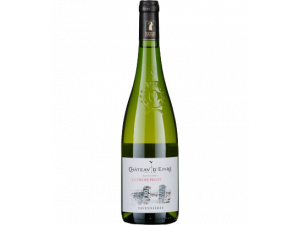


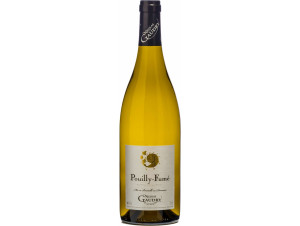
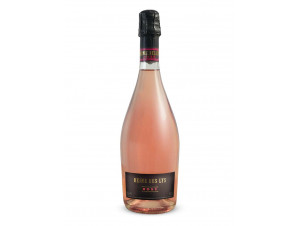
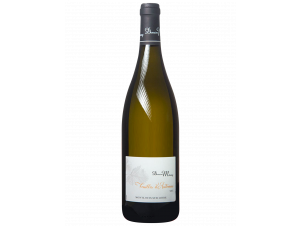



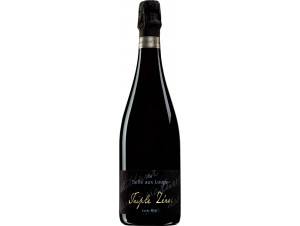

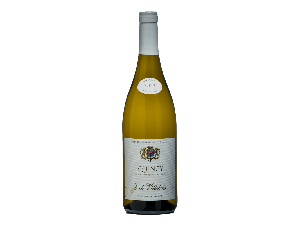



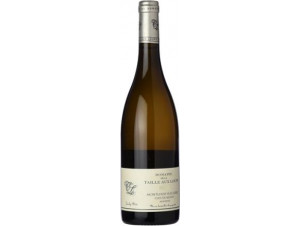






 TWIL - Achat de Vin
TWIL - Achat de Vin


